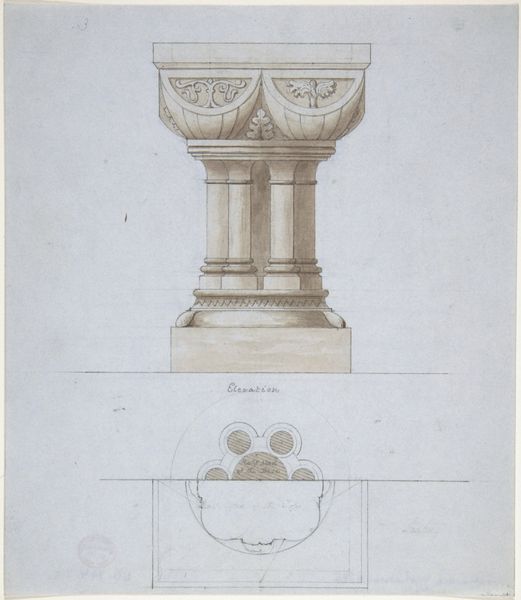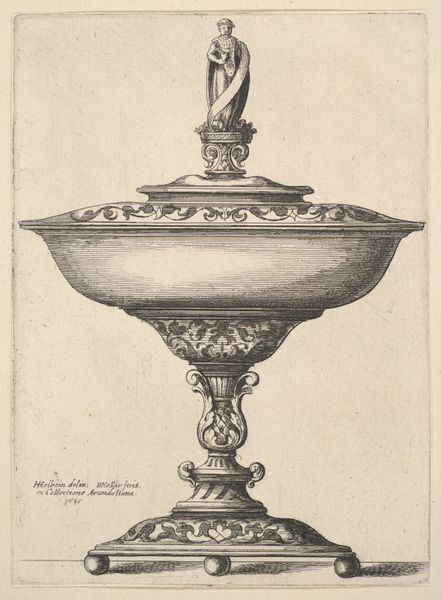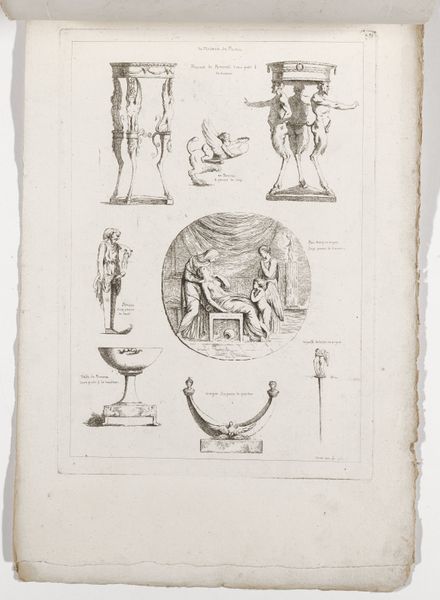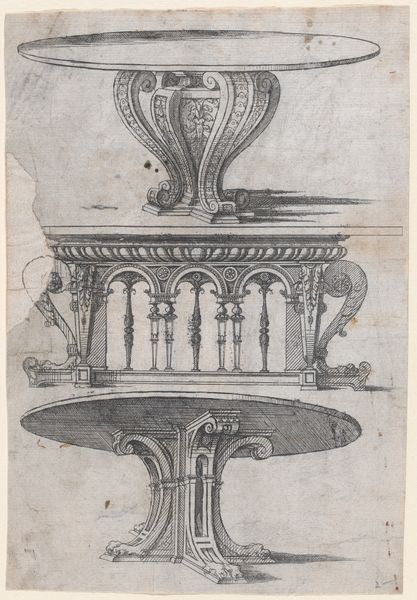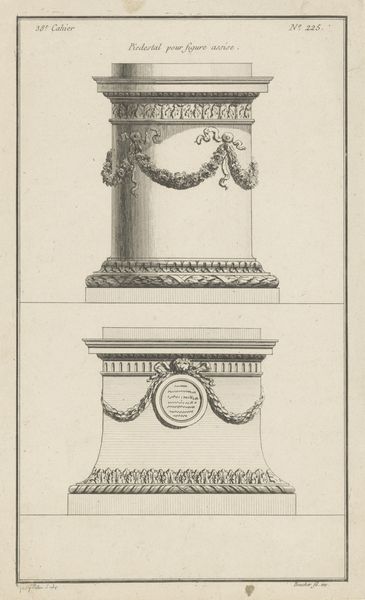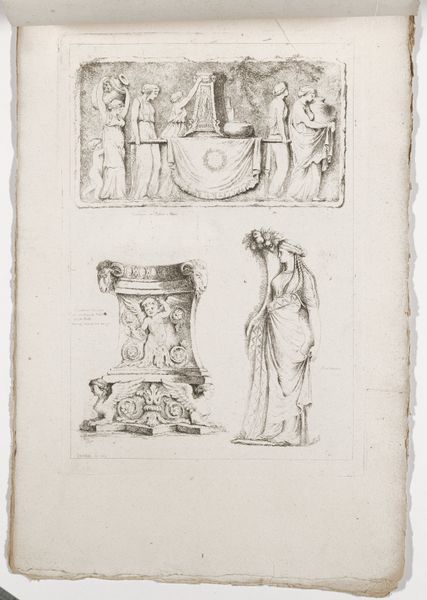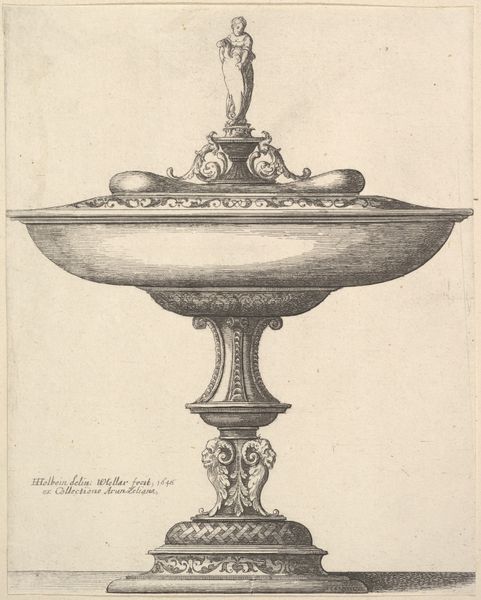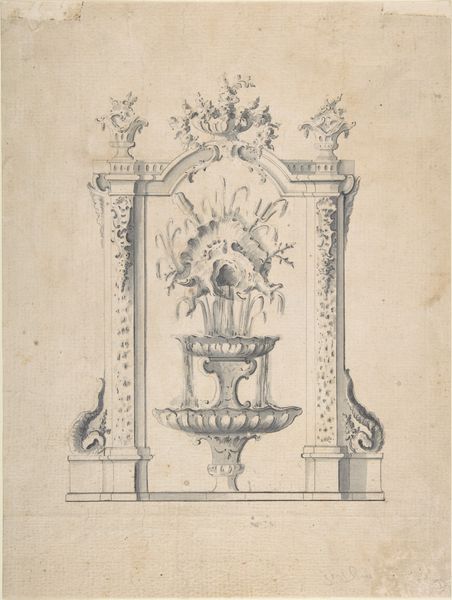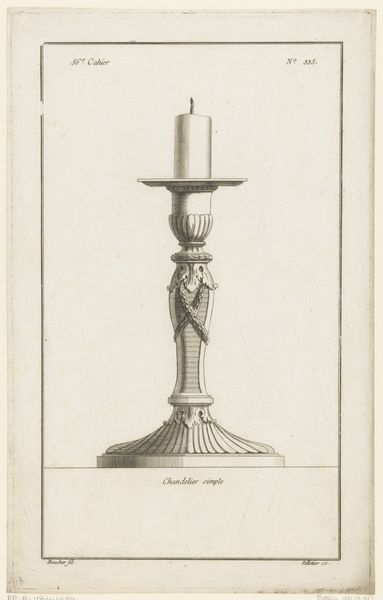
Dimensions: 12 3/4 × 8 13/16 in. (32.39 × 22.38 cm) (plate)16 11/16 × 10 7/8 in. (42.39 × 27.62 cm) (sheet)
Copyright: Public Domain
This print was made in the late 18th century by Jean Claude Richard, Abbé de Saint-Non. It is made using a printmaking process such as etching or engraving, where lines are incised into a metal plate, and then transferred to paper. Consider the labor involved in this image. The artist would have needed skill and patience to create the fine lines and details that define the objects in the scene. This print is not just a record, but a creative act in itself. The image is a collection of vessels and sculptures that appear to be garden decor. The lines are precise, giving a sense of depth and form to the objects. Printing was an essential technology in the 1700s, and a labor intensive one, even though it allowed for the reproduction of images on a larger scale. It democratized access to art and knowledge, playing a crucial role in the circulation of ideas during the Enlightenment. This artwork invites us to reflect on the value and cultural context of art.
Comments
minneapolisinstituteofart about 2 years ago
⋮
The Jean-Baptiste Claude Richard (also known by his title abbé Saint-Non) embodied the important role of the amateur, an patron and connoisseur of the arts as well as a practitioner in 18th-century France. He was a skilled networker, a curious, innovative printmaker, and he supported his artist friends in their projects and travels. Saint-Non executed this suite of prints in Paris in 1763, representing antique fragments and reliefs he saw during his travels in Italy from 1759 to 1761. Most of the monuments are identified in the inscriptions by their locations in Rome. The works reflect French artists’ fascination with antiquity at the time, and the way in which these sources were transmitted to a larger public through the circulation of prints. Remarkably the suite of etchings remain as originally issued, in three groups of six deckle-edged sheets stitched together simply along the top edge.
Join the conversation
Join millions of artists and users on Artera today and experience the ultimate creative platform.

